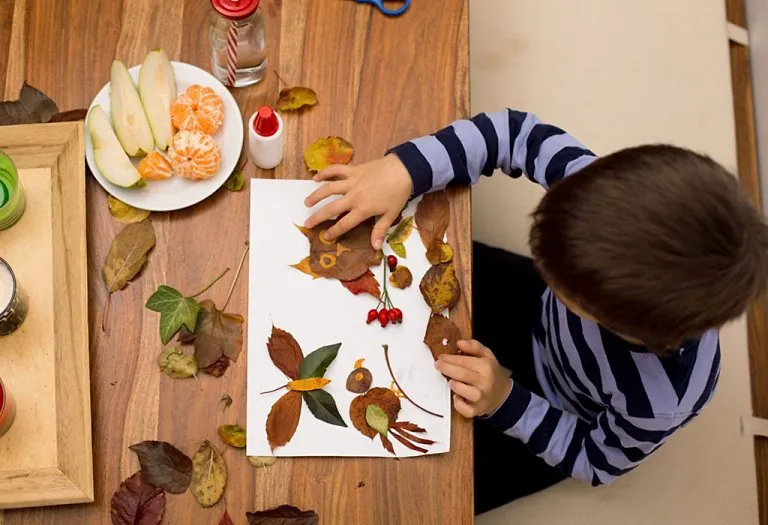Best Sports for Kids to Play
Kids today are increasingly more likely to have sedentary lifestyles with little time spent moving around or using energy. They go to school, come back home, eat and sit for hours on the couch with a gadget in their hands and refuse to move. Habits like these are creating human bodies a breeding ground for diabetes, high blood pressure, obesity, and unexplainable heart diseases. Today, in contrast to a few years ago, more youngsters are becoming afflicted with these chronic ailments at a young age, mostly due to an unhealthy lifestyle. Parents sometimes lack the time to watch their children’s activities, so youngsters are frequently given gadgets to pass the time.
Earlier, children sports like cricket, football, or basketball were popular among children, and they managed to play these games even without the necessary equipment. They would also make up their own versions of games like Dog and the bone, I spy, and hide and seek to stay busy. However, today’s youth appear less familiar with the games available to them and more engrossed in the games they play on their gadgets. It is high time that parents realise the need to organise their children’s daily routines to maximise their growth efficiently.
At What Age Should Children Play Sports?
Playing sports is a great way for children to learn new skills, stay active, and have fun. But what is the right age for kids to start playing sports? The answer to this question may vary depending on physical and emotional readiness, individual interests, and the availability of sports programs in the community.
Generally, kids as young as three can start playing sports in a fun and non-competitive environment. This can help them develop their motor skills and coordination while learning the basics of teamwork, sportsmanship, and fair play. Swimming, soccer, gymnastics, and dance are excellent choices for young children. Children can move on to more structured sports programs as they age and develop more physical and emotional maturity. Around six or seven, kids can start participating in organised sports, such as basketball, baseball, and football. These sports offer structured practices, which can help them develop a sense of discipline, commitment, and competitiveness.
It is important to remember that every child develops at their own pace, and not all children may be interested in sports. Parents should not force their kids to participate in sports if they are uninterested or unprepared. Additionally, ensure that sports activities for kids are safe and age-appropriate, played with trained coaches using proper equipment.
Top 20 Sports for Children
Sports activities & games for kids are a source of developing all-pervasive skills needed to support them in a lifetime. There is a growing need for kids to be involved in physical activity today to counter the effects of technology that have permeated their lives with disastrous consequences. Look at the following list of sports for kids to maximise their potential and help them lead a healthy lifestyle.
1. Football

One of the most popular, football has been considered one of the forever best sports for kids to play. A sport that can be taught to kids as early as four years is fast gaining popularity all over with several kids training to be champions. Star footballers from the world have also created an adrenaline rush associated with the sport.
How It Will Benefit Your Child
The game facilitates teamwork, fairness, discipline and has a host of physical benefits. It promotes muscles strength, flexibility, coordination, weight control and cardiovascular endurance. Juggling the ball improves foot dexterity, gaining balance and improves cardiovascular sustainability.
2. Swimming
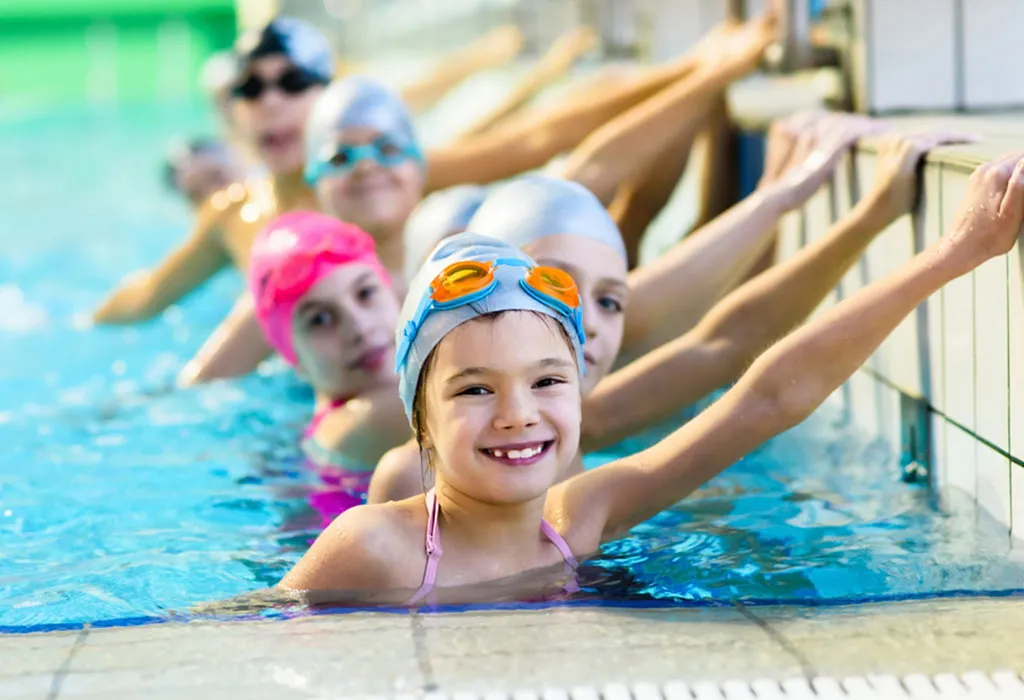
A great sport to tackle the fear of heights and water and also a sport that, once learnt, will never be forgotten. It helps to develop your child’s ability on a singular basis without competing with anyone.
How It Will Benefit Your Child
Swimming improves lung power by teaching breathing control when in water and improves muscle strength by practising different styles of strokes.
3. Bicycling

All kids are crazy about bicycles and love to possess one. Why not turn it into a sport that instils freedom, independence and pride? You can now engage in various bicycling activities with your kid with different kinds of bikes available.
How It Will Benefit Your Child
The first thing a child learns from cycling is road safety and endurance. Socially they learn patience, discipline and self-esteem. The physical benefits, however, outweigh the social benefits. Cycling improves the strength of the legs, coordination of reflexes, improves balance, controls weight and strengthens cardiovascular functions.
4. Inline Skating

Although a little expensive, skating is growing in popularity among kids today, and several professionals teach the sport in a structured manner. It is a great activity for kids to engage in.
How It Will Benefit Your Child
Skating develops patience and encourages the coordination of reflexes. The body develops agility, increases muscle strength, improves cardiovascular fitness and helps the body to balance.
5. Basketball

With just a ball and a hoop, the game is a great way to get kids to be physically active. A great way to engage shy kids to play with a team, the sport has many benefits.
How It Will Benefit Your Child
Kids learn to control their bodies through defence and offence. Making quick passes improves thinking and reflexes, and dribbling the ball encourages eye-foot coordination. Running around with the ball improves muscle strength and develops agility.
6. Running
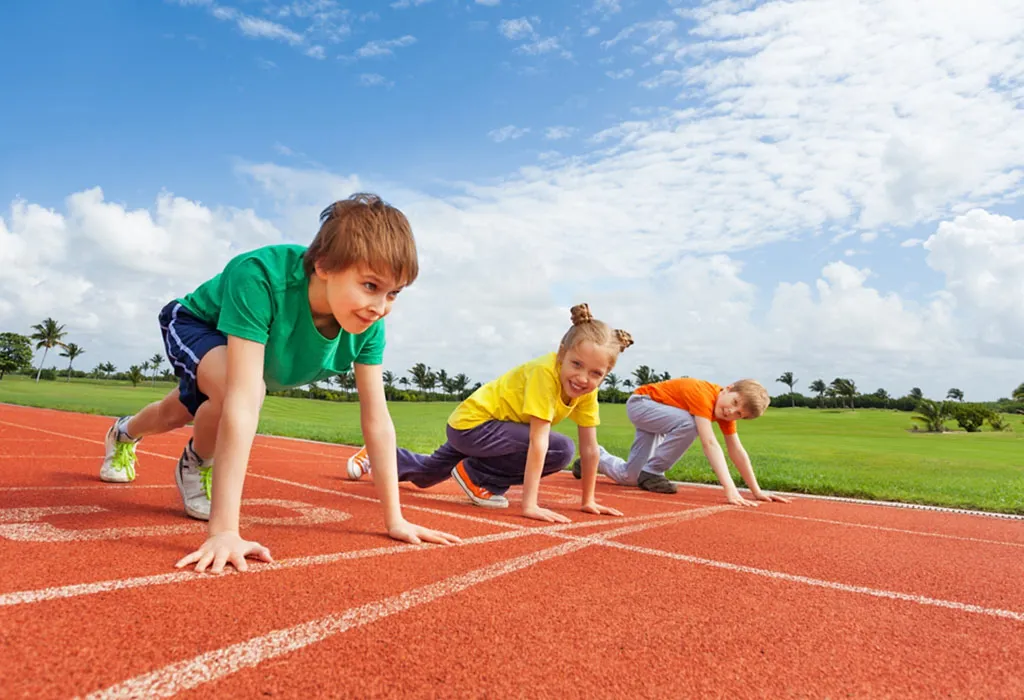
A great activity that has gained immense popularity today with Marathons being organized by several organizations, it is an excellent activity for kids to be involved too. With practically no cost, the sport is one of the best forms of exercise kids can get.
How It Will Benefit Your Child
Running brings about focus, concentration, and endurance, improving muscle strength and cardiovascular fitness. Regular practice sessions build immunity and develop lung power in children, thereby reducing the risk of common colds and flu.
7. Walking

Walking may not sound like a sport but has been certified as one of the best physical activities kids can be encouraged to perform. Western countries reward kids if they walk to school, which has many benefits.
How It Will Benefit Your Child
If you walk with your child, it increases family bonding. Walking in open spaces helps to bond with the environment, and physically walking helps in strengthening the legs, controlling weight and balancing the body.
8. Gymnastics
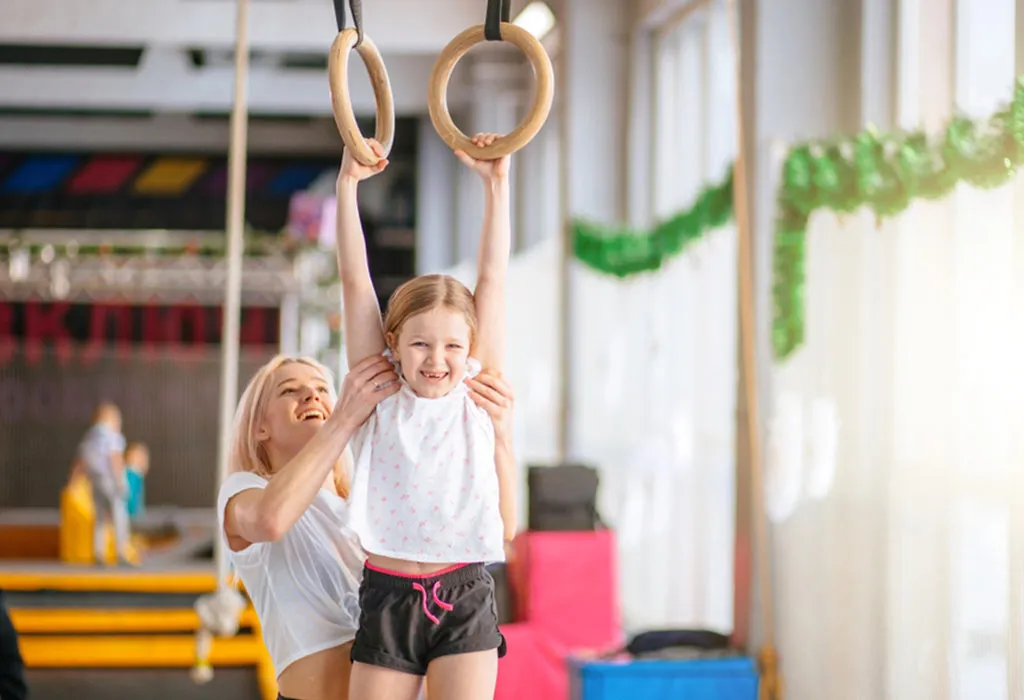
A popular Olympic sport, it is fast gaining popularity amongst kids today. Trained experts teach kids with the right equipment and nurture the talent in kids.
How It Will Benefit Your Child
The first and foremost benefit of gymnastics is balance and flexibility. The sport helps a child to be as flexible as possible as it demands the person to be agile and nimble-footed. Socially it encourages a child to be strong and fearless.
9. Tennis

Players like Roger Federer and Rafael Nadal have put tennis on the international map, and the sport has also gained a lot of popularity among children. Kids have liked the sport as it involves a competitive spirit.
How It Will Benefit Your Child
The sport requires the player to be nimble-footed and a quick thinker. It encourages kids to strategize their moves, learn proper techniques, and develop arm strength and accuracy. It also helps in building muscle strength and improving cardiovascular fitness.
10. Cheerleading

Ideal for girls who are generally not interested in sports, it could be a great way of getting them to exert energy and learn social skills.
How It Will Benefit Your Child
A peppy sport, it requires a positive and enthusiastic attitude. Perfect for nurturing teamwork, cheerleading also helps develop flexibility, agility and a natural sense of rhythm. The continuous movement of the body helps to control weight and improves balance.
11. Judo
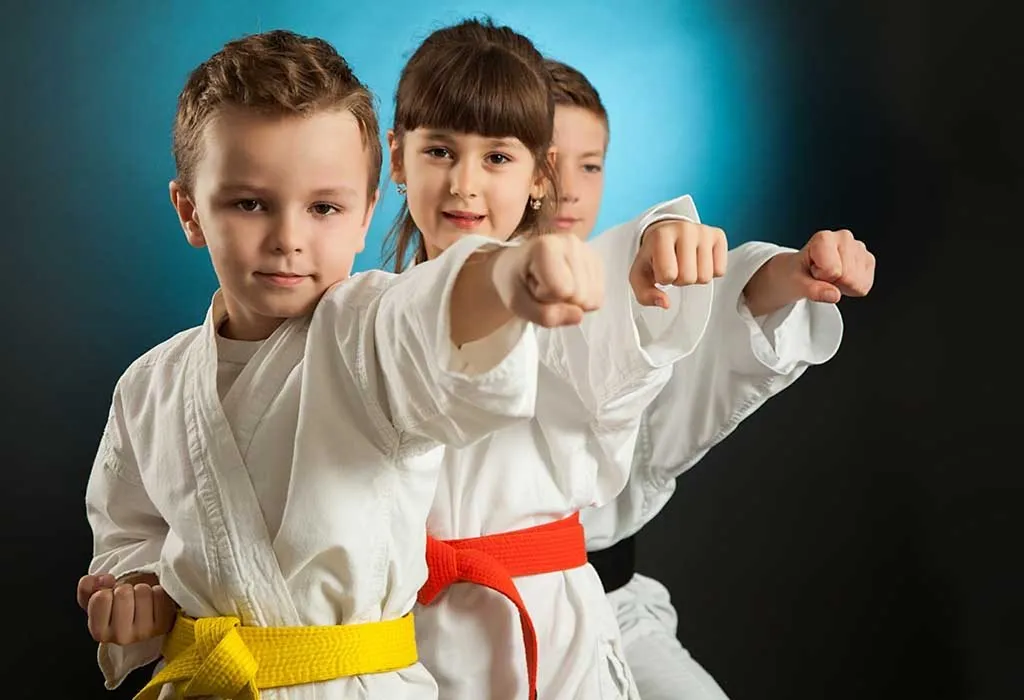
Many schools have started including Judo in their schedule for Physical Training activities as they gradually realise its benefits. Judo is one sport which facilitates the all-around development of a child in terms of physical, emotional and spiritual growth.
How it Will Benefit Your Child
Judo helps instil a sense of discipline. Most associate it with merely fighting or self-defence. But what it also teaches is self-control and focus. While it comprises repetitions of throws and punches, the child also learns how to practise these with different skills, all while following the rules set for this particular sport.
12. Parkour
Parkour is a non-competitive sport that involves moving through an obstacle course by running, jumping, and climbing. It is all about using your body to navigate different challenges creatively and efficiently.
How It Will Benefit Your Child
Parkour can help children develop agility, strength, coordination, and spatial awareness. It involves moving through an obstacle course by running, jumping, and climbing in creative ways. This sport can help children develop confidence and improve their problem-solving skills as they figure out how to overcome different obstacles.
13. Ultimate Frisbee
Ultimate Frisbee is a team sport that involves passing a Frisbee to teammates and trying to score points by passing it into an end zone. It is a fast-paced and exciting sport that requires teamwork, communication, and strategic thinking.
How it Will Benefit Your Child
Ultimate Frisbee is a fun, fast-paced sport that can help children develop teamwork, communication, and strategic thinking. It involves throwing and catching a Frisbee while trying to score points by passing it into an end zone. This sport can help children develop hand-eye coordination and improve their fitness.
14. Trampoline
Trampolining involves jumping and performing acrobatic moves on a trampoline. It is a low-impact sport and a fun way to exercise while improving balance, coordination, and core strength.
How it Will Benefit Your Child
Trampolining can help children develop balance, coordination, and core strength. It involves jumping and performing acrobatic moves on a trampoline. This sport can help children build confidence, improve their body awareness, and provide a fun way to exercise.
15. Roller Skating
Roller skating involves gliding on skates and performing different moves and tricks. It is a low-impact sport and an exciting way to exercise while improving balance, coordination, and cardiovascular fitness.
How it Will Benefit Your Child
Roller skating is a fun and low-impact sport that can help children improve their balance, coordination, and cardiovascular fitness. It involves gliding on skates and performing different moves and tricks. This sport can help children develop self-confidence and social skills and provides a fun way to stay active.
16. Kayaking
Kayaking is a water sport that involves paddling a small boat through the water. It can be done on lakes, rivers, or the ocean. It is a great way to develop upper body strength, coordination, and balance while experiencing the beauty of the outdoors.
How it Will Benefit Your Child
Kayaking is a water sport that can help children develop upper body strength, coordination, and balance. It involves paddling a small boat through the water. Kayaking can help children develop a sense of adventure and exploration and provide a fun way to experience the outdoors.
17. Skateboarding
Skateboarding involves riding on a board and performing different tricks and manoeuvres. It is a sport that promotes creativity, self-expression, and individuality while improving balance, coordination, and agility.
How it Will Benefit Your Child
Children who skateboard can improve their posture, hand-eye coordination, and agility. Additionally, skateboarding can foster originality, independence, and creativity. Children can use it as a fun way to workout and discover their individual styles.
18. Taekwondo
Taekwondo is a martial art that involves a combination of punches, kicks, and blocks. It teaches children self-defence skills, discipline, and focus. It also improves balance, coordination, and overall physical fitness.
How it Will Benefit Your Child
In addition to teaching children self-defence skills, taekwondo can help with self-confidence, discipline, and respect for others. It is a physically demanding sport that can improve cardiovascular health, flexibility, and overall fitness. Taekwondo also teaches children to set goals, work towards them, and overcome challenges.
19. Lacrosse
Lacrosse is a team sport that involves passing a ball using a stick and trying to score points by shooting the ball into the opposing team’s goal. It is a fast-paced and physically demanding sport that requires teamwork, hand-eye coordination, and strategic thinking.
How it Will Benefit Your Child
Lacrosse is a great sport for developing hand-eye coordination, agility, and cardiovascular fitness. It requires teamwork, communication, and strategic thinking, which can help children develop important social skills. Lacrosse also promotes healthy competition, sportsmanship, and leadership skills.
20. Yoga
Yoga involves a series of postures and breathing exercises designed to promote relaxation, reduce stress, and improve physical fitness. It is a great way to develop strength, flexibility, and balance while promoting mindfulness and well-being. Yoga can be adapted for children of all ages and abilities.
How it Will Benefit Your Child
Yoga can be a great way for children to develop strength, flexibility, and balance, which can improve their overall physical fitness. It also promotes relaxation, stress reduction, and mindfulness, which can help with emotional regulation and overall well-being. Yoga can also help children develop self-awareness and a sense of calm and focus.
Why Should Children Play Sports?
It goes without saying that a little bit of physical activity is a must in everyday routine. For a kid, it is mandatory, and it only does well than any harm. Getting your child involved in sports is a great way to incorporate fitness into their lives and be embedded in their system for the future. Playing a sport of any kind has immeasurable benefits.
1. Fitness
Engaging in a sport ensures that your child remains fit and healthy. It builds immunity and reduces the risk of diseases or common illnesses. Research has also proven that active kids will likely grow into physically active adults and will continue to stay the same.
2. Social Development
Involvement in physical activity and sports gets kids to interact with people at all levels. Playing a sport involves teamwork, communication, leadership skills, and following instructions. All this leads to learning to develop a congenial personality that will appeal to everyone.
3. Increased Confidence And Self-Esteem
Coaches encourage their students at all levels to push the envelope regarding performance. A word of appreciation from their coach or parents is enough for kids to put their best foot forward. Constructive criticism accompanied by well-structured advice to put corrective measures in place boosts the morale of young children.
4. Positive Influence On Academics
Playing a sport of any kind helps to improve the cognitive skills of a child. Playing a sport requires determination, dedication and perseverance to achieve a target. The same methodical approach can be applied to academics to get positive results. Studies have proved that kids who are good in sports do well in academics, too, as they have high concentration levels.
5. Respect Protocol
Any sport is played by rules. Discipline is primary while playing a game, and if your young one does not want to follow directions, it is a good idea to sign him up for a sports activity. Taking instructions, following directions and accepting the referee’s decision go a long way in instilling discipline in a child.
6. Emotional Bearing
Kids could have a lot of stress under the surface that needs the means to release. Sports activities channelise the underlying emotions of children in a positive manner. A good coach will try and control the negative side of the child and divert that energy towards achieving a target thereby imbibing patience in them.
7. Diversion From Anti-Social Activities
Kids today can fall an easy prey to anti-social activities like smoking, drugs or even the perils of social media. Being involved in sports helps them gain focus and realize that these activities could lead to disastrous effects on their body and performance.
8. Reduces Stress And Depression
It is no doubt that kids today face a lot of stress owing to increased academics and lifestyle goals. Studies have shown that most kids today face depression and have suicidal tendencies as they are unable to cope up with their academics. By playing a sport, a child can release all the pent-up stress and depression and feel rejuvenated to take on academics.
9. Discipline
Kids today lack discipline in their life. They have no fixed hours to go to bed, wake up, and do things at a snail’s pace. Playing a sport brings in discipline as it involves regular practice sessions at timed intervals. Children learn the importance of following a routine and discipline themselves to follow the same.
10. Confidence Booster
Kids who play a sport have high levels of confidence owing to their involvement with people and following instructions. A sense of achievement is involved when playing a sport that serves as a confidence booster, and kids feel confident to take on any challenge posed to them.
Your child need not excel in sports, but by playing or being involved in a sport, he could grow up to be a fine individual with an affable personality.
Strategies That You Can Use to Ensure Safety of Children While Playing Sports
Children can improve their physical health, social skills, and self-confidence by participating in sports. Regarding children’s sporting activities, safety must be put first. Here are some methods for ensuring children’s safety when they participate in sports:
- Ensure kids are adequately monitored: Ensuring that kids are appropriately supervised while playing is one of the most crucial things parents and coaches can do. This entails always having responsible adults watch their activities and take appropriate action when needed.
- Provide adequate equipment: Ensure kids have access to the right gear for their sport, such as mouthguards, pads, and helmets, to ensure their safety while playing. This equipment should be fitted, of good quality, and maintained properly for the best effectiveness.
- Teach good playing techniques: To reduce the chance of injury, teaching kids the right techniques for their sport is important. Children should not engage in risky or dangerous behaviours, and coaches and parents should ensure they do tasks with the proper form and technique.
- Emphasise warming up: Children should be encouraged to appropriately warm up before participating in sports and to cool down afterwards. Injuries can be avoided, and pain can be reduced in this way.
- Keep them hydrated: To prevent your kids from getting dehydrated, you should urge them to drink enough water before, during, and after participating in sports. This can aid in avoiding illnesses brought on by heat and other health issues.
- Keeping a watch on symptoms of injury: Understanding the symptoms of an injury will help parents and coaches respond appropriately if a kid is hurt. This can entail halting the game or getting medical help.
Parents and coaches can contribute to ensuring kids’ safety if they implement these six strategies. This will reduce the chances of damage while enabling kids to benefit from active sports, enduring their advantages.
There is enough evidence to prove that simply getting kids together for any activity that involves physical effort is beneficial for their development. By encouraging sporting activities and events in their lifestyle, you will be raising a healthy child with an equally active mind.
References/Resources:
1. PCSFN Science Board; Benefits of Youth Sports; President’s Council on Sports, Fitness & Nutrition Science Board; https://health.gov/sites/default/files/2020-09/YSS_Report_OnePager_2020-08-31_web.pdf; September 2020
2. Felfe. C, Lechner. M, Steinmayr. A; Sports and Child Development; PubMed Central; https://www.ncbi.nlm.nih.gov/pmc/articles/PMC4856309/; May 2016
3. Sports and Children; The American Academy of Child and Adolescent Psychiatry; https://www.aacap.org/AACAP/Families_and_Youth/Facts_for_Families/FFF-Guide/Children-And-Sports-061.aspx; October 2018
4. Playing Sports Is Good For Your Child; Health University of Utah; https://healthcare.utah.edu/the-scope/kids-zone/list/2018/09/playing-sports-good-your-child; September 2018
5. Sport and children; BetterHealth Channel; https://www.betterhealth.vic.gov.au/health/healthyliving/sport-and-children





